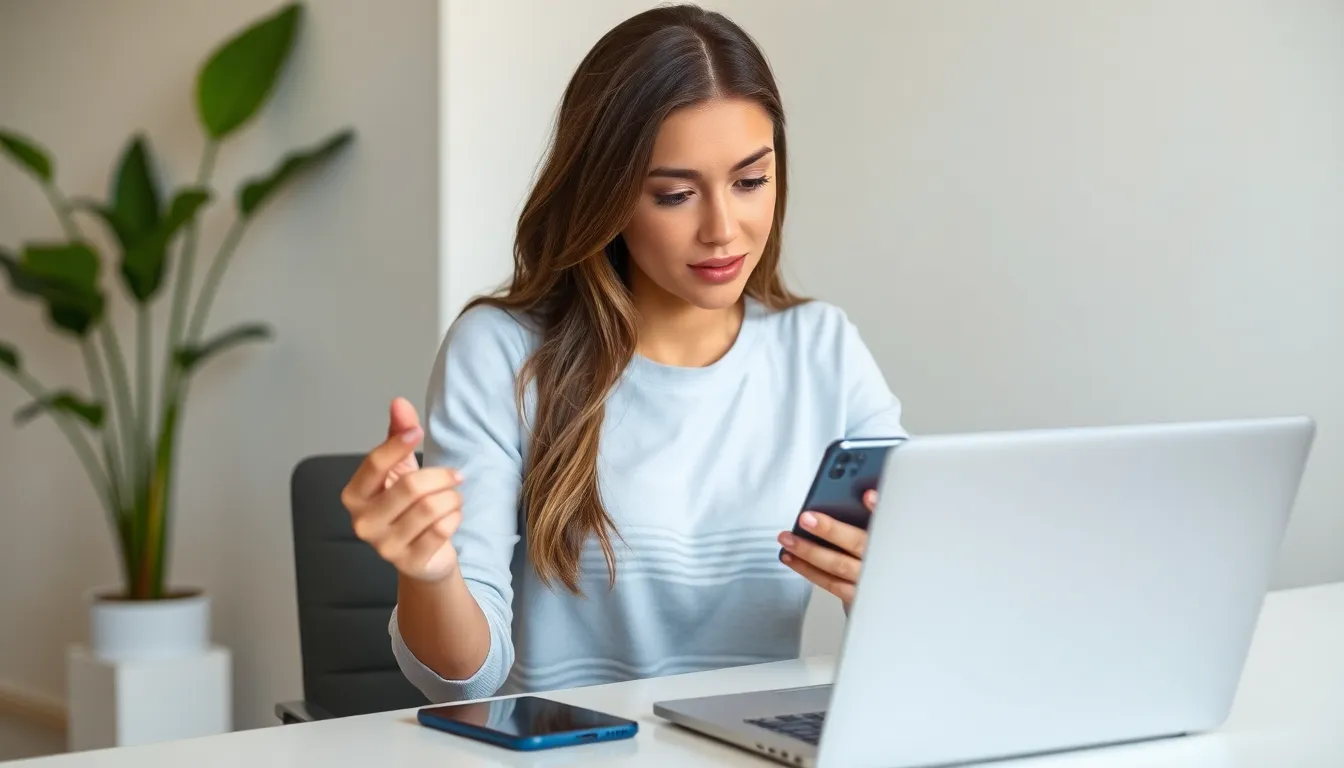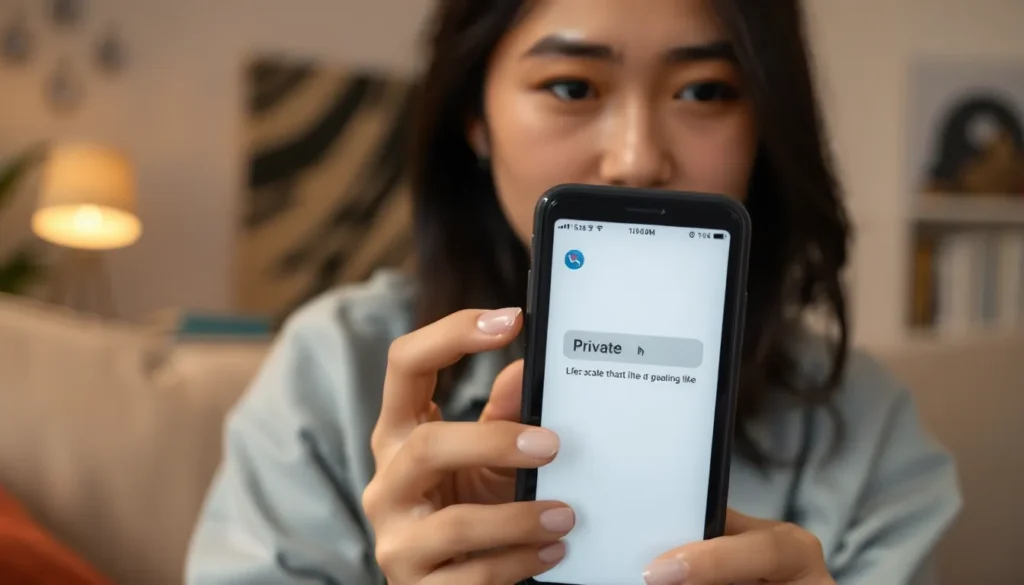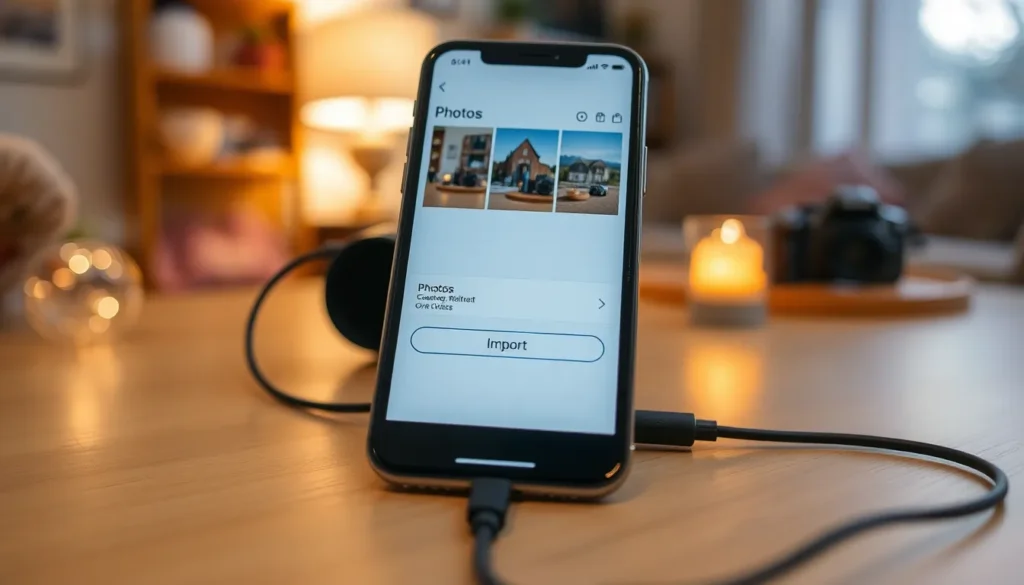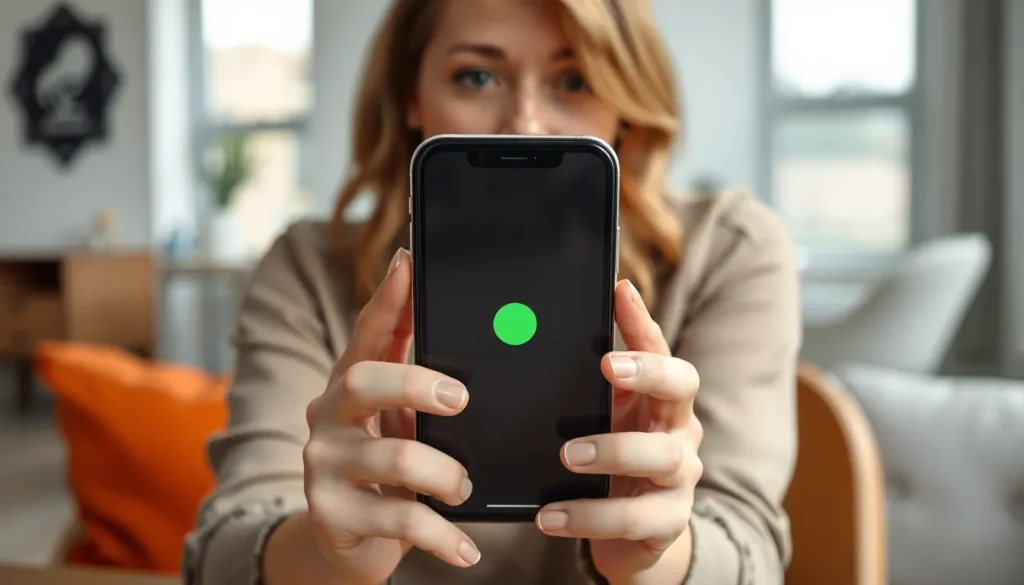Table of Contents
TogglePicture this: you’re in the middle of an important video call, and your iPhone’s screen suddenly decides to play peek-a-boo, flipping through apps like a hyperactive toddler. Frustrating, right? Locking your iPhone’s touch screen can save you from these unexpected surprises and keep your focus on what really matters.
Understanding Touch Screen Locking
Touch screen locking prevents unintended taps on an iPhone. This feature proves useful during video calls or when the device is in a pocket. Users benefit from a consistent display, eliminating distractions caused by accidental touches.
iPhones offer several methods to lock the touch screen. Guided Access provides a straightforward way to restrict access to specific apps. Activating this feature involves going to Settings, selecting Accessibility, and then choosing Guided Access. Users can set a passcode, ensuring only authorized access.
Screen Time also offers a useful function. This option allows users to limit app usage and restrict access during certain hours. It provides additional flexibility, adapting to personal preferences.
For parents, these features serve as excellent tools to manage children’s screen time. Setting boundaries with Guided Access or Screen Time protects children from unintended interactions with the device.
Users often prefer enabling touch screen lock during presentations or meetings. This approach maintains concentration on essential tasks, preventing disruptions. Applications like PowerPoint or Keynote benefit significantly from a locked screen, allowing seamless presentations without interruptions.
When using Guided Access, users can easily exit by triple-clicking the side button. This results in immediate access to other functions, maintaining a balance between controlled usage and convenience.
Touch screen locking features enhance user experience, maintaining focus during critical interactions. Utilizing these tools contributes to a more purposeful and distraction-free iPhone experience.
Importance of Locking the Touch Screen
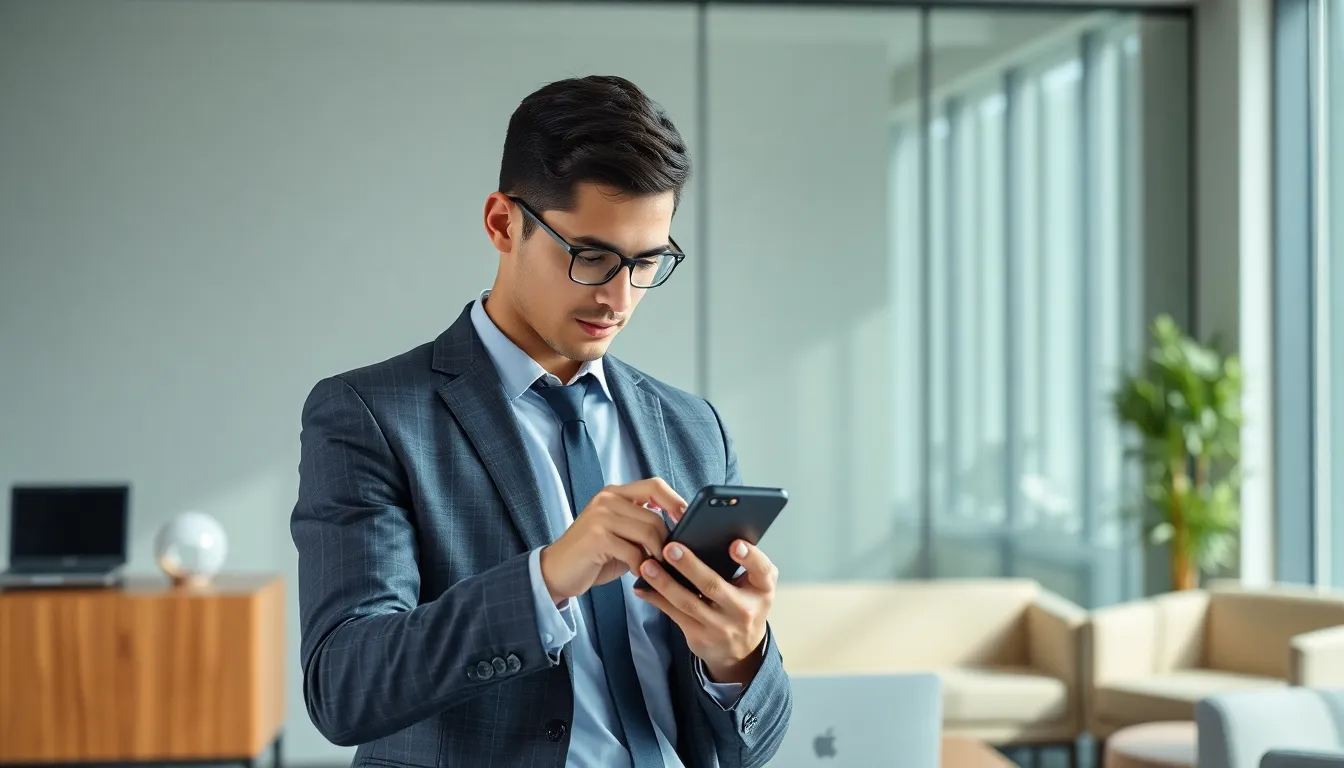
Locking the touch screen on an iPhone offers significant benefits. It prevents distractions during critical moments and enhances overall usability.
Prevent Accidental Touches
Accidental touches can disrupt important tasks. Locking the touch screen ensures users avoid unintended screen actions during video calls or when the device is in a pocket. Features like Guided Access create a distraction-free environment, as they disable touch input outside designated areas. This setup is especially useful for individuals giving presentations, who require an uninterrupted experience. The option to lock the touch screen provides peace of mind, allowing users to concentrate fully on their conversations without worrying about inadvertent taps.
Enhance Security
Enhancing security becomes easier when users lock their touch screens. Preventing unauthorized access to apps and personal information is crucial for data protection. Features like Guided Access require a passcode, ensuring only authorized users can control the device. This measure benefits parents managing children’s screen time or individuals using their devices in public spaces. Protecting sensitive information strengthens users’ confidence in their device. Overall, locking the touch screen bolsters security by limiting access and controlling user activity, creating a safer experience.
Methods to Lock Touch Screen on iPhone
Knowing how to lock the touch screen on an iPhone can enhance focus during calls, presentations, or meetings. Users can choose from several methods for effective screen locking.
Guided Access Feature
Guided Access restricts the iPhone to a single app, preventing unintended touches. Activating this feature requires navigating to Settings, choosing Accessibility, and selecting Guided Access. Users can triple-click the side button to start or stop this mode. Setting a passcode ensures only authorized access after activating Guided Access, adding a layer of security. This feature proves valuable during presentations or video calls. It creates an environment free from distractions while maintaining focus on essential tasks. Parents find this particularly useful for managing their children’s device usage, enabling controlled access to specific apps.
AssistiveTouch Option
AssistiveTouch offers another way to lock the touch screen, especially for users with physical accessibility needs. This feature enables users to create a floating button that can perform multiple actions. Activating AssistiveTouch requires going to Settings, selecting Accessibility, and tapping on Touch. Once enabled, users can customize the menu, allowing quick access to functions like locking the screen. Utilizing AssistiveTouch helps prevent accidental touches while performing tasks. Users can easily toggle this feature on or off, ensuring convenience and efficiency during important activities. This method provides an extra layer of usability for those needing customized accessibility options.
Step-by-Step Guide to Using Guided Access
Using Guided Access on an iPhone locks the touch screen to specific apps, preventing accidental taps. This feature enhances focus during calls, presentations, or when multitasking.
Activating Guided Access
To activate Guided Access, users first open the desired app. Next, a triple-click on the side button enables the feature. It’s essential to ensure that the correct app is in the foreground before initiating this step. Users should see a grey overlay indicating that Guided Access is active. Setting a passcode adds another layer of security for exiting the mode.
Configuring Settings
Configuring settings for Guided Access enhances its effectiveness. Users tap on “Options” in the bottom left corner of the screen to customize features such as touch sensitivity and time limits. Adjusting these settings allows users to control which features remain accessible during usage. Enabling the “Sleep/Wake Button” option can prevent accidental setting changes as well. After finalizing, tapping “Start” begins the session with the chosen configurations.
Exiting Guided Access
Exiting Guided Access is straightforward. A triple-click on the side button brings up the passcode entry screen. Users must enter their set passcode to terminate the session. Upon successful entry, the phone returns to normal functionality instantly. This process ensures users can easily regain access while maintaining secure usage during Guided Access when needed.
Using AssistiveTouch to Lock Touch Screen
AssistiveTouch provides a convenient way to lock the touch screen on an iPhone. This feature, designed for users with physical accessibility needs, allows easy access to essential functions, including touch screen locking.
Enabling AssistiveTouch
To enable AssistiveTouch, users must navigate to the Settings app. They select Accessibility, followed by Touch, and then AssistiveTouch. Once activated, a floating button appears on the screen, providing quick access to various controls. Users can place the button anywhere on the screen for optimal convenience. After enabling AssistiveTouch, locking the touch screen becomes straightforward.
Customizing the Menu
Customizing the AssistiveTouch menu enhances its functionality. Users can tap the floating button to access the menu and select Customize Top Level Menu. From here, they can add new actions, rearrange existing ones, or remove items. Adding the Lock Screen option allows instant screen locking with a single tap. Users can personalize the menu to suit their needs, streamlining their experience and reducing accidental touches during important tasks.
Locking the touch screen on an iPhone is a simple yet effective way to enhance focus and security. By utilizing features like Guided Access and AssistiveTouch, users can create a distraction-free environment during video calls or important tasks. These tools not only prevent accidental taps but also provide peace of mind regarding unauthorized access to personal information.
Implementing these methods allows for a more controlled and purposeful use of the device. Whether it’s during meetings, presentations, or managing children’s screen time, locking the touch screen can significantly improve the overall user experience. Embracing these features ensures that users can concentrate on what truly matters without interruptions.

